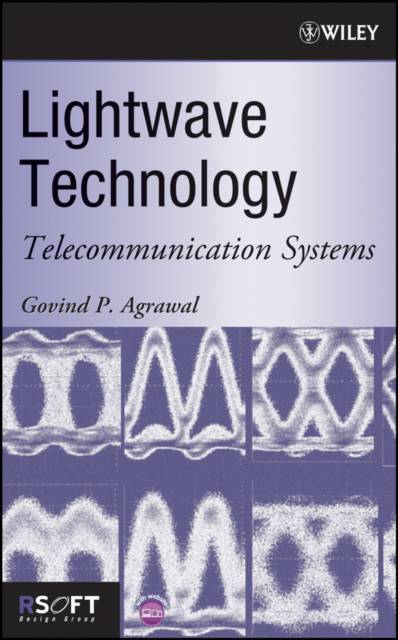
- Retrait gratuit dans votre magasin Club
- 7.000.000 titres dans notre catalogue
- Payer en toute sécurité
- Toujours un magasin près de chez vous
- Retrait gratuit dans votre magasin Club
- 7.000.0000 titres dans notre catalogue
- Payer en toute sécurité
- Toujours un magasin près de chez vous
269,45 €
+ 538 points
Description
The state of the art of modern lightwave system design
Recent advances in lightwave technology have led to an explosion of high-speed global information systems throughout the world. Responding to the growth of this exciting new technology, Lightwave Technology provides a comprehensive and up-to-date account of the underlying theory, development, operation, and management of these systems from the perspective of both physics and engineering.
The first independent volume of this two-volume set, Components and Devices, deals with the multitude of silica- and semiconductor-based optical devices. This second volume, Telecommunication Systems, helps readers understand the design of modern lightwave systems, with an emphasis on wavelength-division multiplexing (WDM) systems.
* Two introductory chapters cover topics such as modulation formats and multiplexing techniques used to create optical bit streams
* Chapters 3 to 5 consider degradation of optical signals through loss, dispersion, and nonlinear impairment during transmission and its corresponding impact on system performance
* Chapters 6 to 8 provide readers with strategies for managing degradation induced by amplifier noise, fiber dispersion, and various nonlinear effects
* Chapters 9 and 10 discuss the engineering issues involved in the design of WDM systems and optical networks
Each chapter includes problems that enable readers to engage and test their new knowledge to solve problems. A CD containing illuminating examples based on RSoft Design Group's award-winning OptSim optical communication system simulation software is included with the book to assist readers in understanding design issues. Finally, extensive, up-to-date references at the end of each chapter enable students and researchers to gather more information about the most recent technology breakthroughs and applications.
With its extensive problem sets and straightforward writing style, this is an excellent textbook for upper-level undergraduate and graduate students. Research scientists and engineers working in lightwave technology will use this text as a problem-solving resource and a reference to additional research papers in the field.
Recent advances in lightwave technology have led to an explosion of high-speed global information systems throughout the world. Responding to the growth of this exciting new technology, Lightwave Technology provides a comprehensive and up-to-date account of the underlying theory, development, operation, and management of these systems from the perspective of both physics and engineering.
The first independent volume of this two-volume set, Components and Devices, deals with the multitude of silica- and semiconductor-based optical devices. This second volume, Telecommunication Systems, helps readers understand the design of modern lightwave systems, with an emphasis on wavelength-division multiplexing (WDM) systems.
* Two introductory chapters cover topics such as modulation formats and multiplexing techniques used to create optical bit streams
* Chapters 3 to 5 consider degradation of optical signals through loss, dispersion, and nonlinear impairment during transmission and its corresponding impact on system performance
* Chapters 6 to 8 provide readers with strategies for managing degradation induced by amplifier noise, fiber dispersion, and various nonlinear effects
* Chapters 9 and 10 discuss the engineering issues involved in the design of WDM systems and optical networks
Each chapter includes problems that enable readers to engage and test their new knowledge to solve problems. A CD containing illuminating examples based on RSoft Design Group's award-winning OptSim optical communication system simulation software is included with the book to assist readers in understanding design issues. Finally, extensive, up-to-date references at the end of each chapter enable students and researchers to gather more information about the most recent technology breakthroughs and applications.
With its extensive problem sets and straightforward writing style, this is an excellent textbook for upper-level undergraduate and graduate students. Research scientists and engineers working in lightwave technology will use this text as a problem-solving resource and a reference to additional research papers in the field.
Spécifications
Parties prenantes
- Auteur(s) :
- Editeur:
Contenu
- Nombre de pages :
- 480
- Langue:
- Anglais
Caractéristiques
- EAN:
- 9780471215721
- Date de parution :
- 23-06-05
- Format:
- Livre
- Dimensions :
- 158 mm x 244 mm
- Poids :
- 793 g

Les avis
Nous publions uniquement les avis qui respectent les conditions requises. Consultez nos conditions pour les avis.






